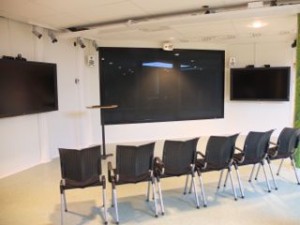On Friday I went down to Cork to give a talk on Near Futures for the Digital Humanities at University Collge Cork (Ireland). UCC is one of the universities that are offering the Structured PhD in Digital Arts and Humanities (DAH) so I had a chance after the talk to learn about the program and how it is developing.
The topic of my talk is one we all love to speculate about but should also be careful about as predictions about the future are often so wrong (or so about us now.) I titled my talk “Near Futures” because I wanted to stick to what is near AND talk about how we get near to the future through imagining possibilities (and building possibilities.) The digital humanities has, I think, a different relationship with future humanities than other disciplines that are more focused on the past. That is not to say that other disciplines don’t imagine the future, it is just to say that the digital humanities has to navigate the tide of futurism in computing in general.




